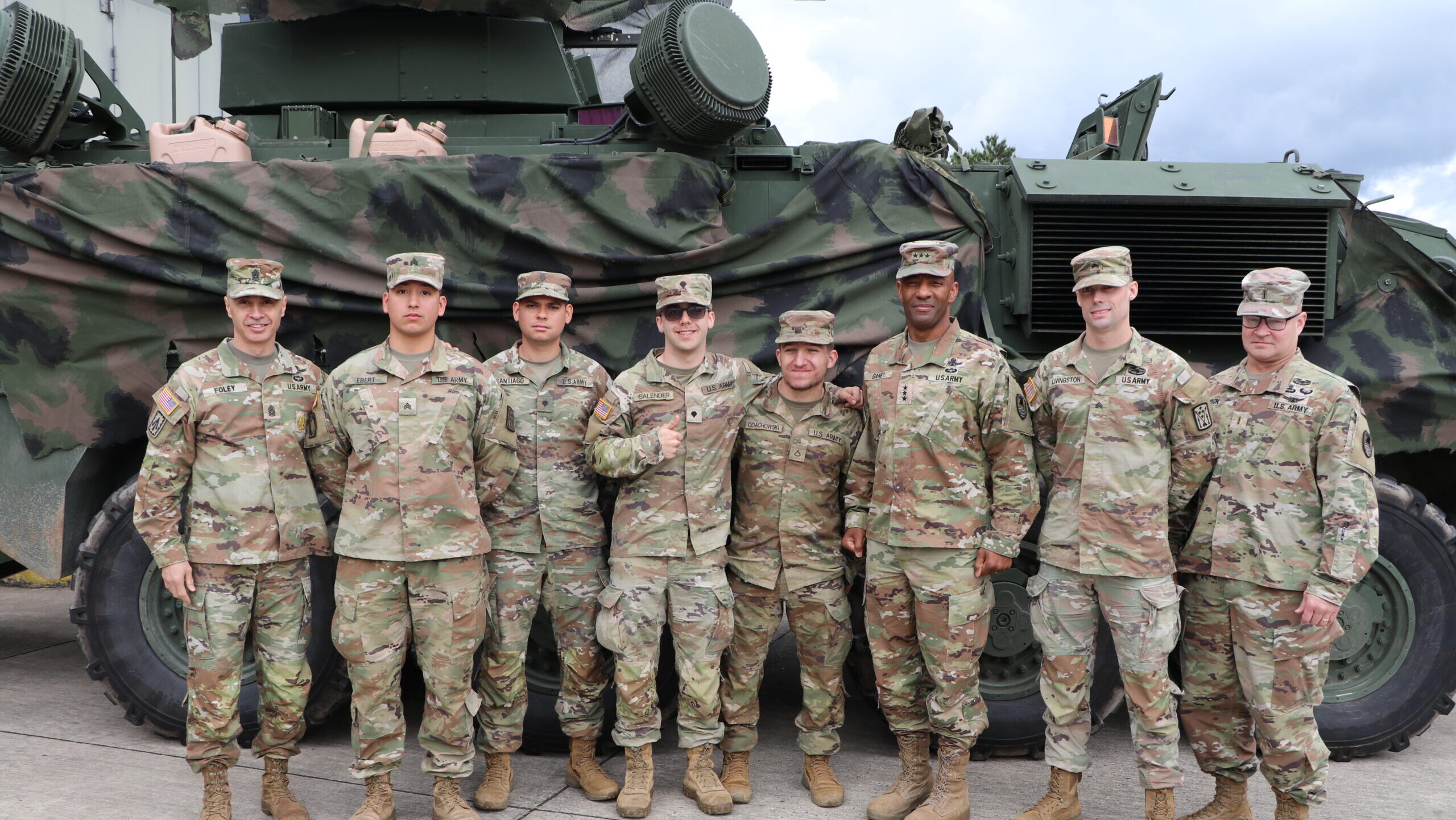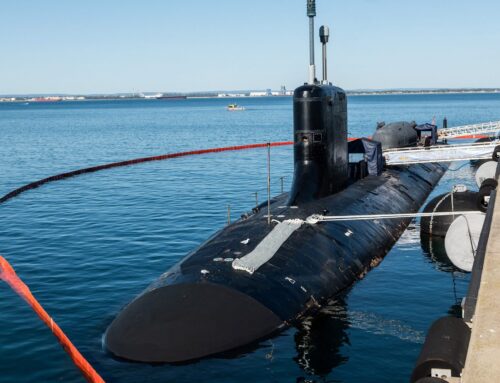On May 22, 2024, Lt. Gen. Sean Gainy, Space and Missile Defense Commanding General visits 5th Battalion, 4th Air Defense Artillery Regiment in Ansbach, Germany. The SMDC Commanding General and Command Sergeant Major John Foley briefed battalion leadership on the future of Space and Missile Defense within the U.S. Army. (U.S. Army Photos by Spc. Andrew Simeri)
The Army’s Space and Missile Defense Command (SMDC) recently announced it is planning to increase its space personnel and space control capabilities, despite the presence of the Space Force, created specifically to centralize resources and talent to maintain space superiority and provide those capabilities for the combatant commands to employ.
The nation does not need the Army to duplicate those capabilities. In truth, the Army replicating Space Force operations within its service wastes precious resources, undermines jointness, and drives organizational fissures — all of which hinder America’s ability to fight and win.
To date, there has been no pushback by the Secretary of Defense, Joint Chiefs of Staff or Congress on this bad idea. That should change, and those who should know better need to muster up the courage to halt these wasteful duplicative actions. The Army should be stopped, and all resources involved should be revectored to the Space Force.
The 1986 Goldwater-Nichols Department of Defense Reorganization Act clarified the functions of the services and the combatant commands. The former provide capabilities by organizing, training and equipping forces to be apportioned to the latter for employment in military operations. Services do not fight wars, combatant commands do. Service capabilities are unique, and they exist to provide the means to master operations in their respective domains — air, sea, land, littorals and space.
Jointness means combatant commands apportion unique capabilities from each of the services to best meet the requirements of a specific operation. It does not mean every service gets an equal share of the action regardless of real-world circumstances, and it does not mean each service replicates the functions of the others within its own ranks. To this end, the Air Force does not operate ships, and the Navy does not have tanks. The entire point of this alignment is to effectively and efficiently focus training, organization, and equipping in specific zones of excellence. That’s why Congress created the Space Force in 2019.
The Army’s encroachment is clear — it is standing up an entirely new career field to conduct space operations instead of relying on the Space Force to deliver desired effects to the combatant commands. The stand up of the Space Force actually included the transfer of some soldiers and previous Army space missions to the new service. The Army’s new plan seeks to turn back the clock by regenerating organic space mission capabilities within the Army. Make no mistake — those new Army space capabilities will focus on Army missions, not joint operations, as clearly outlined in the recently published Army Space Vision.
The Space Force has a FY24 budget of $30 billion while the US Army’s is $185.5 billion. The Space Force is organizing, training and equipping space forces for use in joint operations, while the Army is building space capabilities and capacity for use by the Army. Space is a joint domain, which every service relies on a limited pool of shared assets. Directing resources at this organic function at the expense of the joint construct undermines options available to combatant commanders, and makes it clear the Army never bought into the joint force operational construct.
This latest move to usurp Space Force functions is only one of many recent examples where the Army is trying to obtain for itself the functions to conduct combat operations on its own. Deep attack is a mission of the Air Force, as is airborne ISR, but both are being usurped by the Army. And perhaps the most egregious move is the development and stand up of “multi-domain task forces.” Is that not the role and responsibility of the combatant commands? Should not the Secretary of Defense insist on the services staying in their domain-focused lanes of responsibility?
With respect to the Space Force, the current budget reflects that it already has too few resources given the expansive nature of its mission demands and America’s newest service is expected to take a 3.3 percent cut in FY26. Congressional budget caps make the fiscal situation even more dire. The idea the Army would apportion money for space assets just for its own use, as opposed to that money going to the service created to give the Army and all its sister services those capabilities, is ludicrous.
Great Power Competition requires actual jointness: using the right capabilities regardless of service origin at the right places and right times to achieve a combatant commander’s objectives. The nation cannot afford each service duplicating other service roles, responsibilities, and missions and in doing so, wasting precious resources. In a time of inflation, constrained budgets, and budget caps, it is fiscally irresponsible and operationally dangerous to allow the Army to continue its encroachment of Space Force missions.
Ignoring the tenets of joint operations leads to a waste of taxpayer dollars and risks unnecessarily complicating combatant command functions. The Secretary of Defense should intervene by directing the Army to halt duplication of Space Force functions, and taking budget action to eliminate any Army funding for functions that are performed by the Space Force — the service created specifically to execute space operations.
Jennifer Reeves is a retired United States Air Force Colonel with almost 29 years of active duty, finishing her career as the Chief of the Air Force’s Engine Room, leading the service’s Program Objective Memorandum (POM) build. Immediately prior to joining the Mitchell Institute, Reeves worked for a non-traditional government contractor focusing on creating purpose-built software applications to assist in decision-making in the POM build process.
Charles Galbreath is a retired United States Space Force Colonel, a Command Space Operator with expertise in Missile Warning, Space Control, Space Launch, and ICBM operations, and a Senior Materiel Leader with experience developing advanced technology demonstration and prototype systems.
Both are Senior Resident Fellows for Space Studies at the Mitchell Institute.











